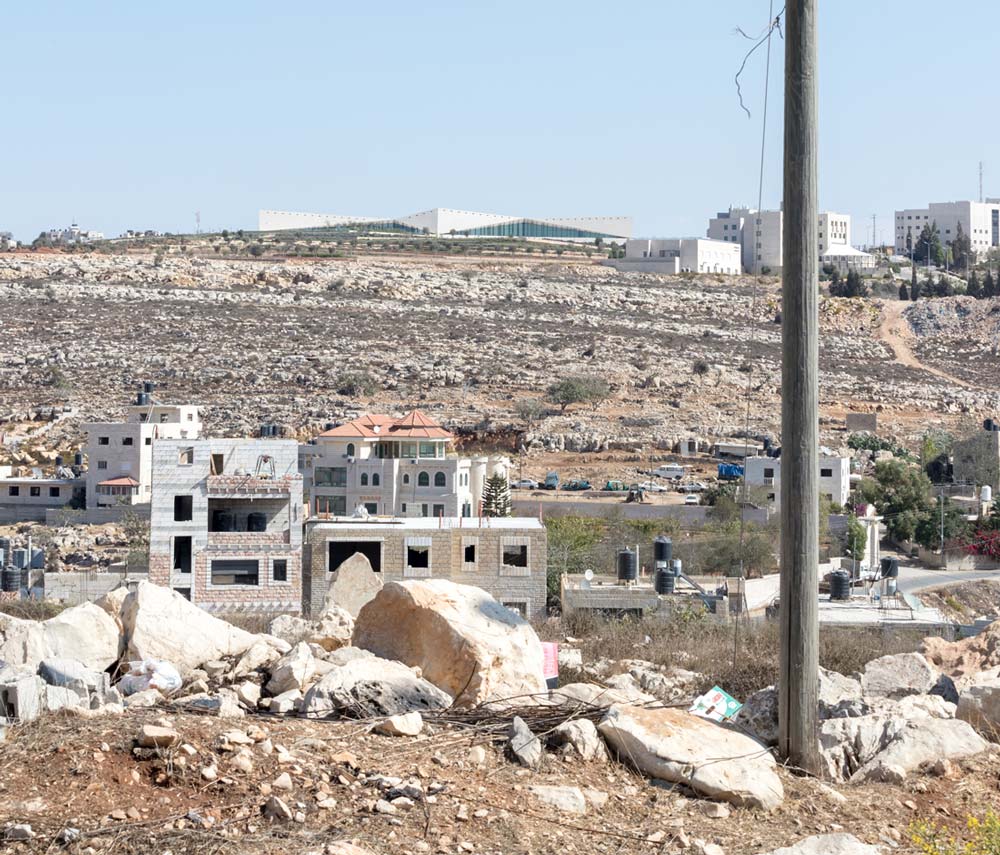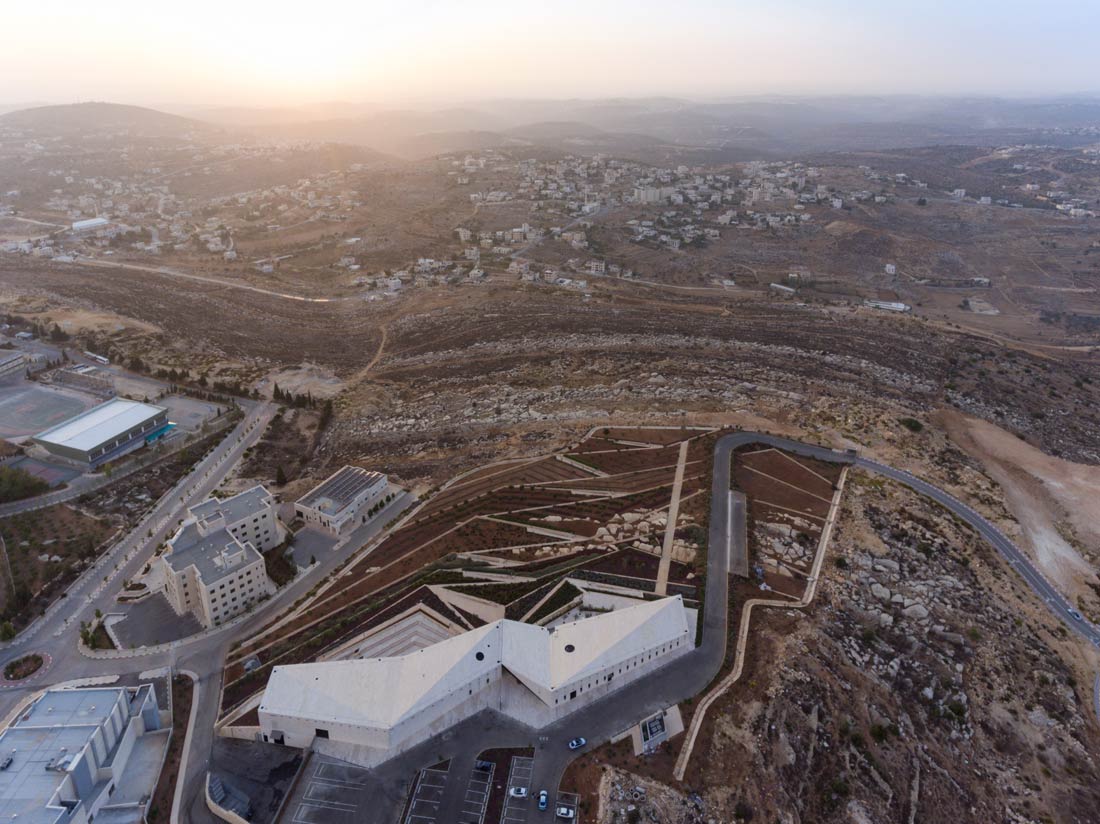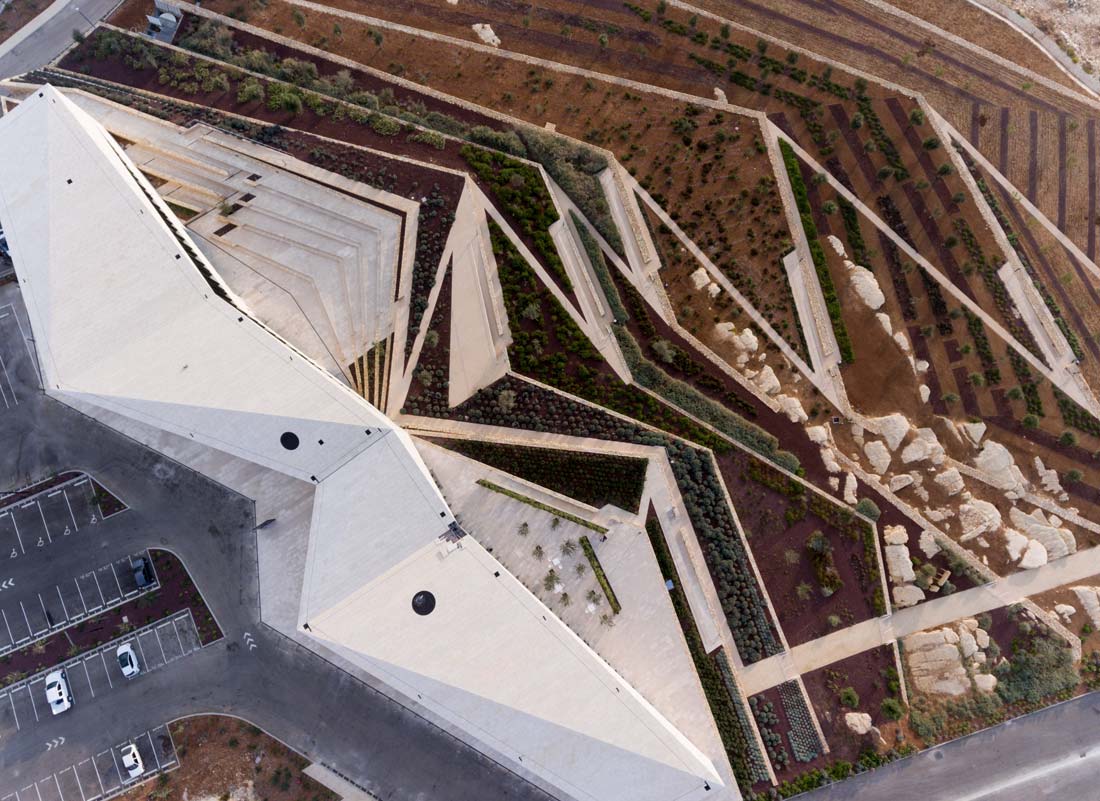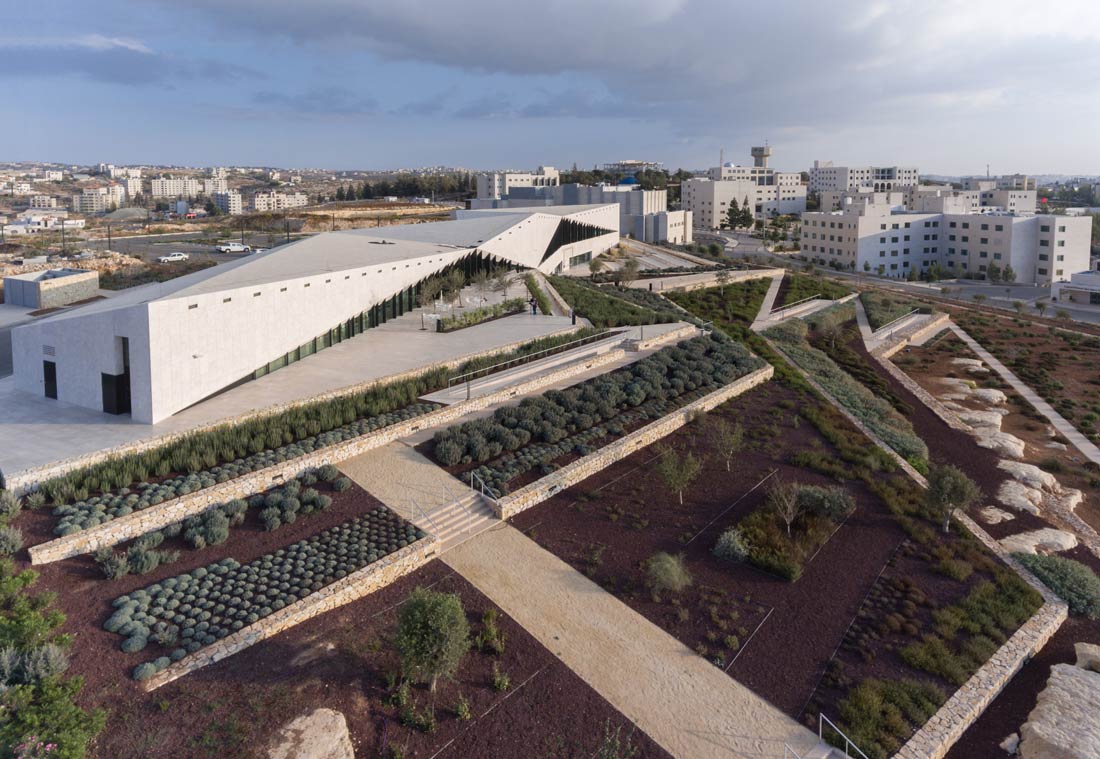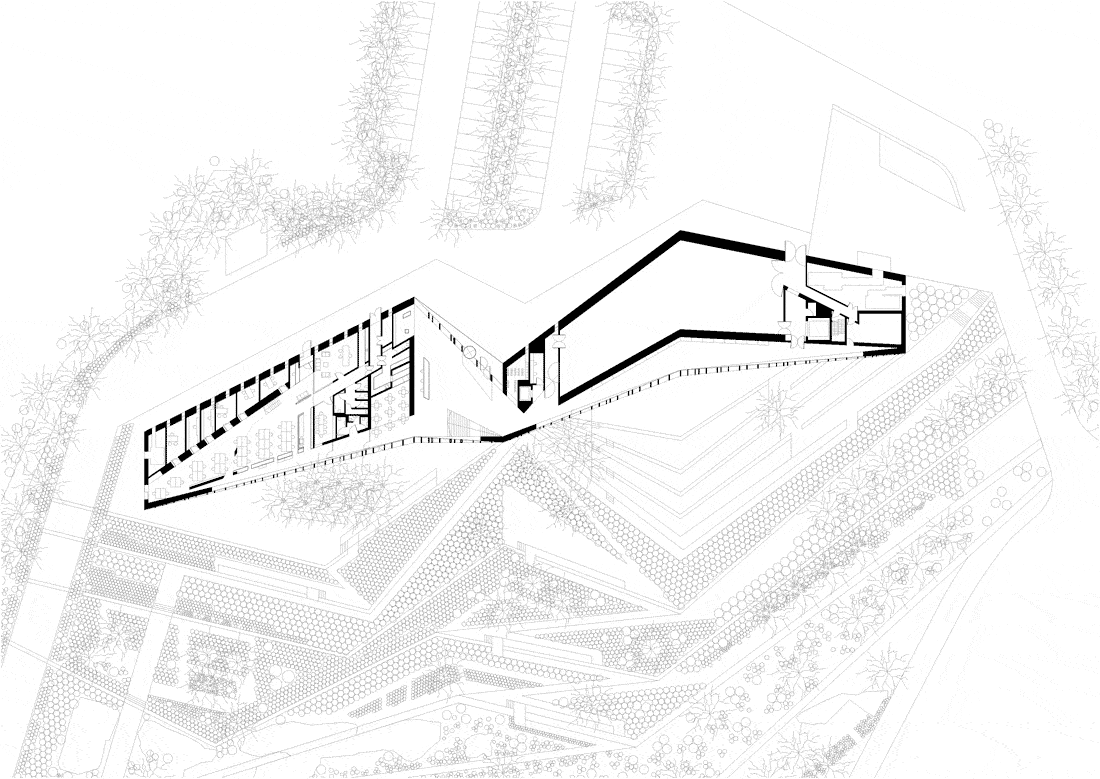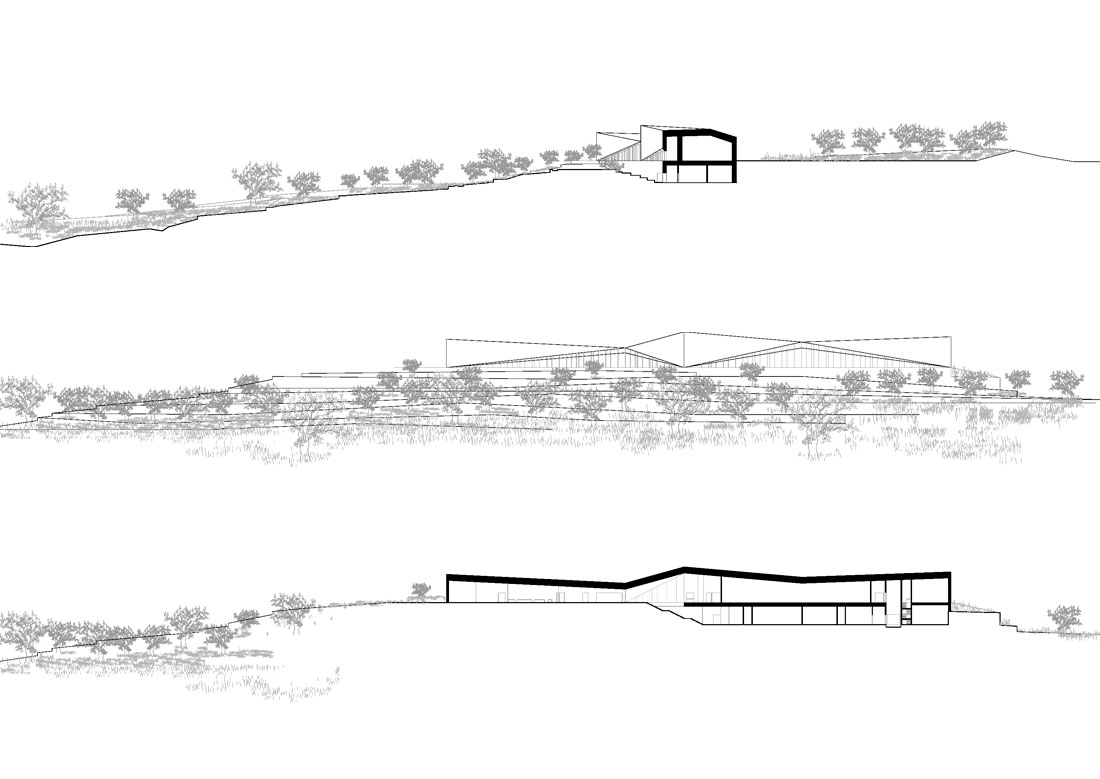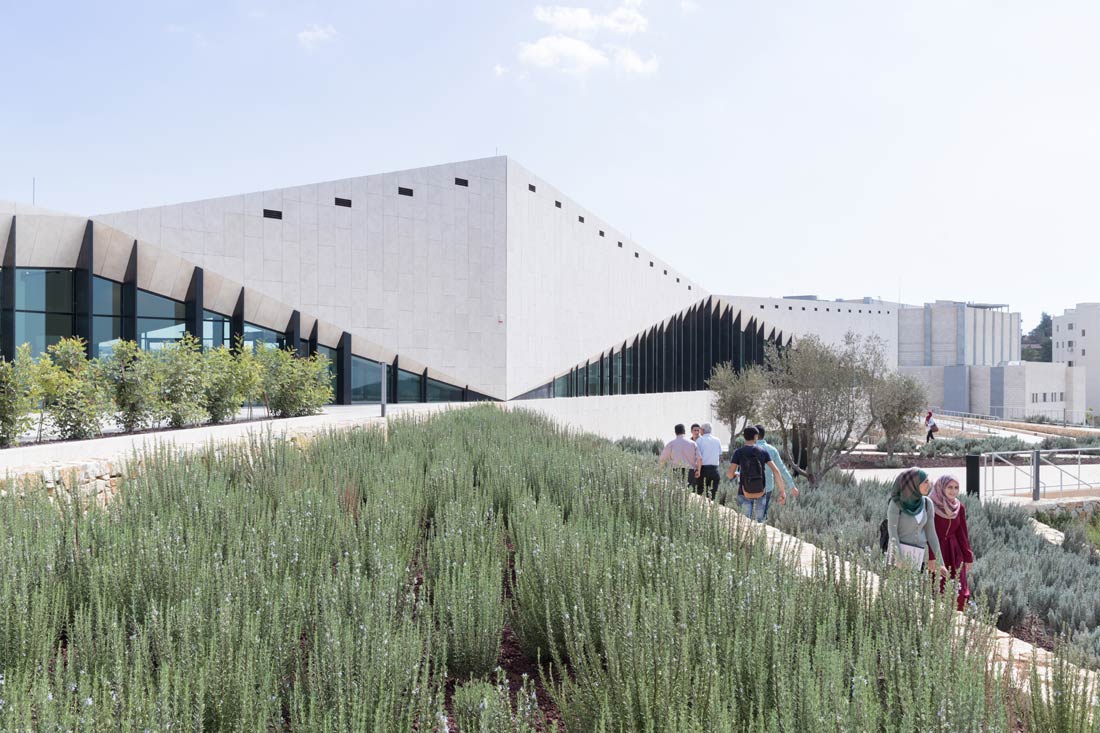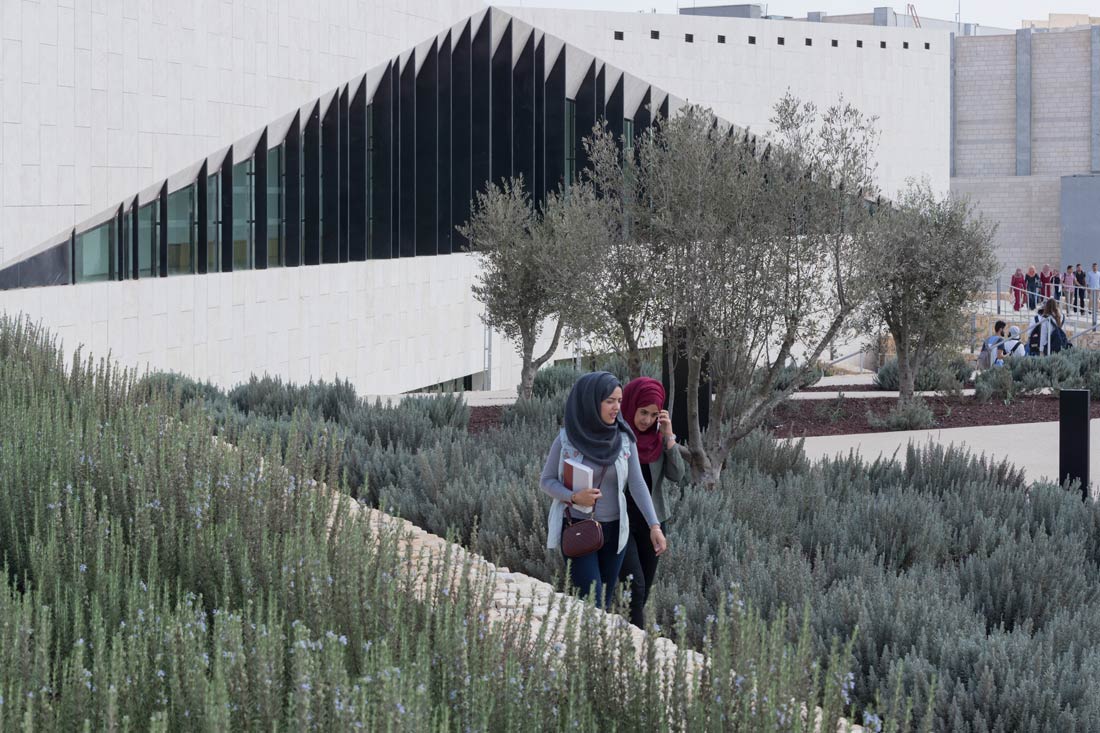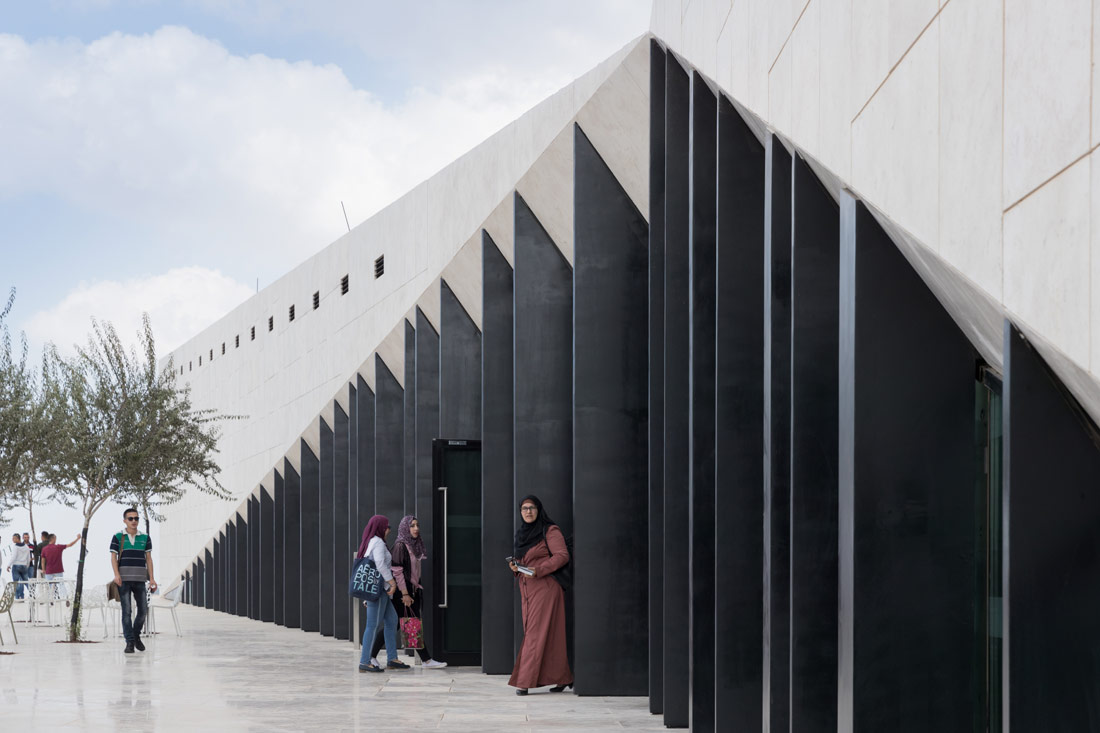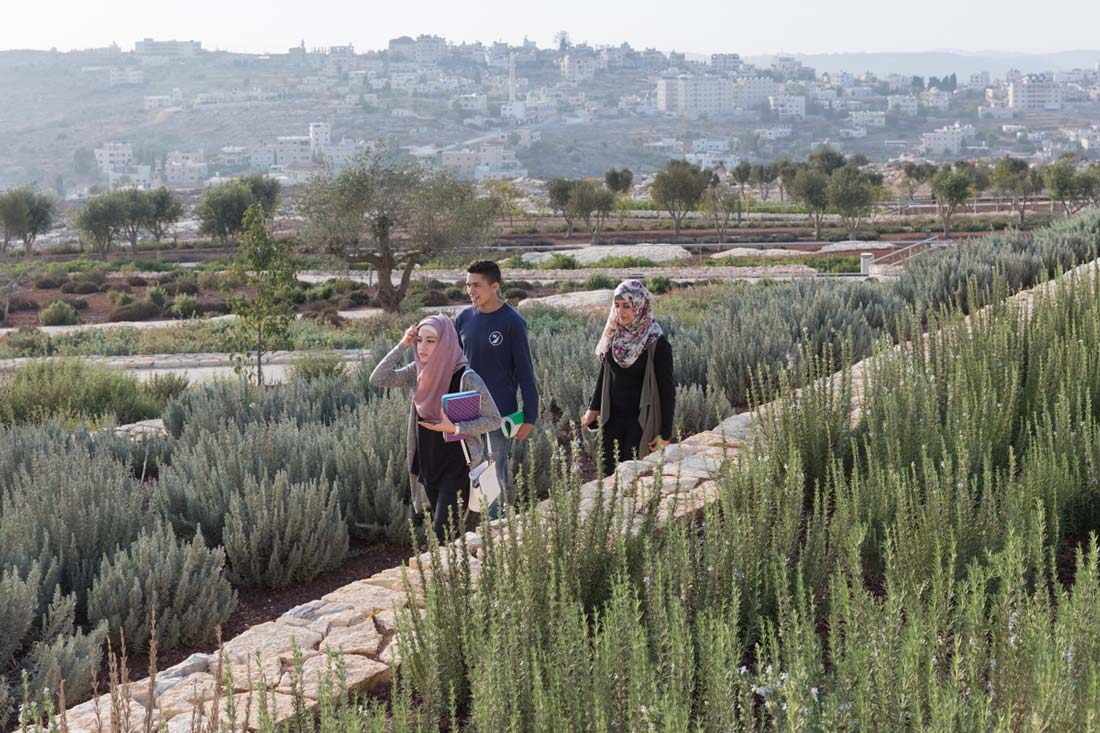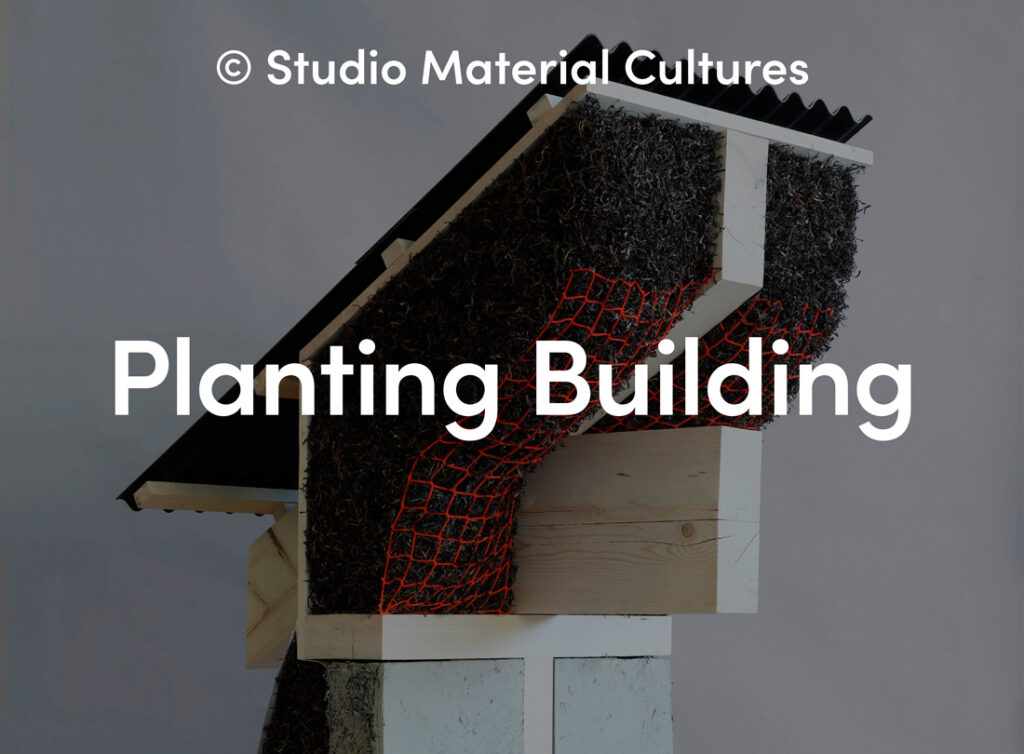The mission of the Palestinian Museum is to be the leading, most credible and robust platform for shaping and communicating knowledge about Palestinian history, society and culture. To deliver on this mission, the client’s intention has been to develop a Palestinian Museum hub located 25km north of Jerusalem (West Bank) and in two phases of building construction. Phase 1 (completed 2016) consists of a built area of 3,500 sqm. It includes a climate-controlled gallery space, an amphitheatre, a cafeteria with outdoor seating, a library, classrooms, storage, a gift shop and administrative spaces, all set within 4 hectares of planned gardens. During Phase 2 the museum will expand to a total of 10,000 sqm.
Site Plan
Worked landscape
The Palestinian landscape has the ‘worked’ quality of a city; every element of it has been touched and tells a story of intervention, production, culture, environment and commerce. Like in the city, the terraced landscape has its history embedded within it. The approach to the Palestinian Museum draws on this history of the terraced landscape, embedding the museum into its immediate site and drawing from this site to tell a larger story of a diverse culture. The site is formed through a series of cascading terraces, created by field stone walls which trace the previous agricultural terraces of the area. The theme of the landscape – from the cultural to the native landscape – unfolds across the terraces: the more cultured and domesticated terraces are close to the building, and the planting changes gradually as one moves down the terraces to the west.
Embedded Landscape
The cascade of terraces tells a variety of stories: citrus brought in through trade routes, native aromatic herbs, a rich and varied landscape with connections to the east and west.
Terrace themes include:
Cultural landscapes and themes relating to culture and history
Agricultural heritage
Relationship of plants to trade routes and commerce
Natural landscapes and themes relating to wilderness and native plants, scrub lands, grass lands
Nature & culture: incorporation of native plants into domesticated agriculture and food/medicine
Plans
Sections
Emerging Landscape
The building itself emerges from the landscape to create a strong profile for the hilltop both integrated into the landscape yet creating an assertive form that has a distinctive identity. Largely single-storey, it stretches out along the hilltop from the south to north, overlooking the gardens to the west. The ground floor, comprising entrance reception, museum administration, galleries, screening room and cafe opens out directly onto the gardens at its northern end, while overlooking a stone amphiteatre below it at the southern end. On the lower ground floor there is a public Education and Research Centre with classrooms, workshops and administrative spaces. The education centre opens onto a cut stone amphiteatre to the west. In addition to the Education and Research Centre, the main art collection spaces, photographic archives, and art handling are all located on the lower ground floor. These spaces are not accessible to the public; they open onto a secure delivery yard at the eastern side of the building.
The building will be the first LEED Certified building in Palestine.



